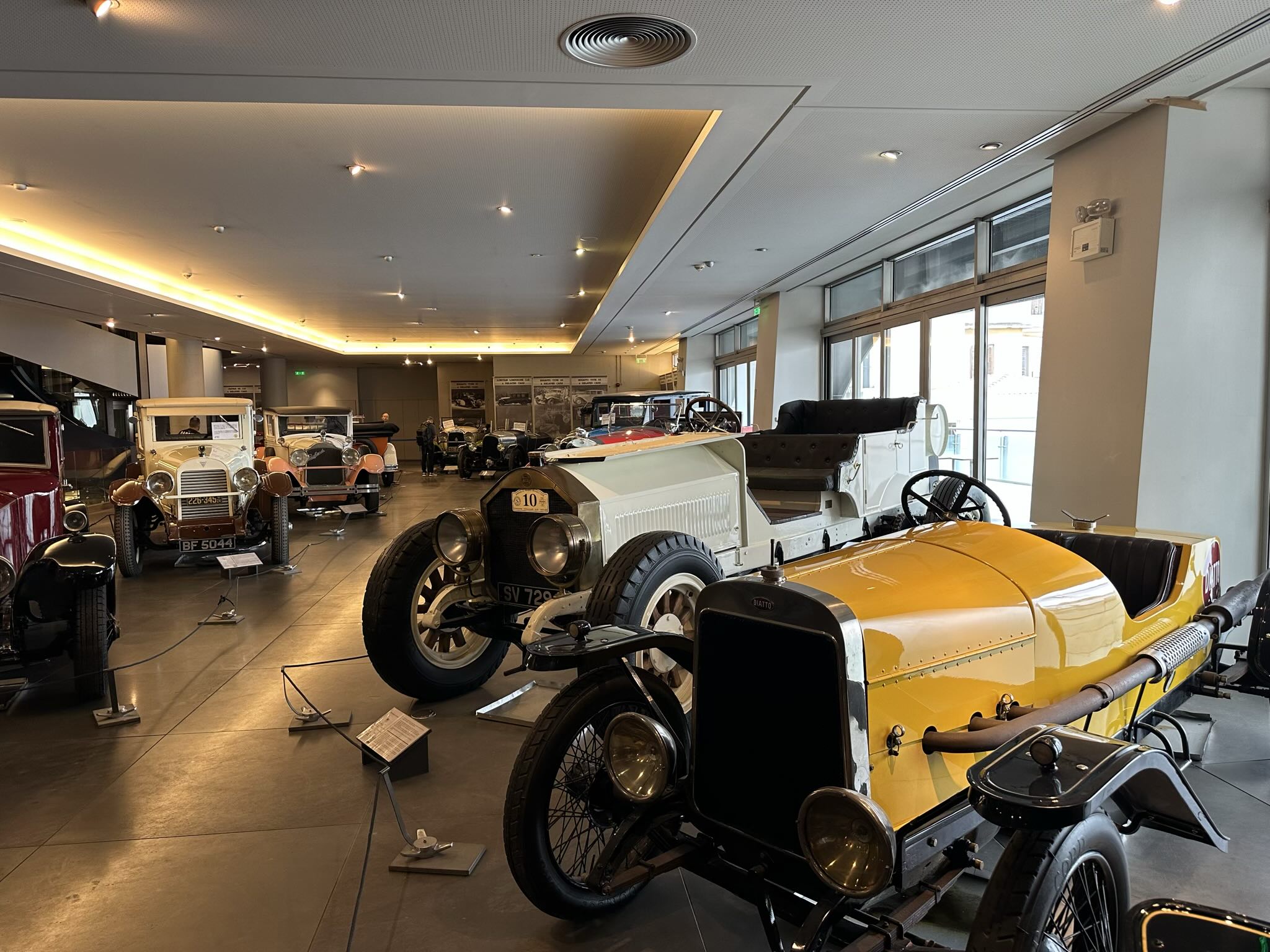
Welcome to the bewildering world of cars that bring new meaning to the phrase ‘meh’ in automotive engineering. We’re taking a deep dive into vehicles that compel you to stop and wonder, ‘Did the manufacturer even bother to put in the effort?’ These notorious cars have etched their names into automotive history, not for their standout performance or revolutionary designs but for their spectacular and often laughable failures. Join us as we uncover some of the most ridiculous missteps that have left car enthusiasts scratching their heads and automotive critics chuckling, from questionable engineering marvels to baffling marketing disasters, these are the cars that provoke laughter and disbelief!

**1. Triumph Mayflower (1949–53)**: Triumph, a name often associated with sleek British motoring, decides to manufacture a luxury small car! The Triumph Mayflower was intended to charm the American market, but it ended up being more of a comical footnote in automotive history. With a body inspired by the likes of Rolls-Royce but with all the grace of a hippo in a tutu, this car was heavy, underpowered, and downright ugly. James May, an automotive guru, didn’t hold back, calling it the ugliest car ever built! It seems that the Mayflower was more like a may-not.

**2. Nash Metropolitan (1954–62)**: The Nash Metropolitan set out to be a stylish urban runabout, cheekily marketed as a ‘motorized shopping cart for affluent urban gals.’ Believe it or not! Although it aimed to attract the female demographic, it ultimately flopped commercially due to its dismal performance and handling. Renowned critic Brian Sewell even deemed it one of the most dreadful cars ever created. Nonetheless, a devoted cult following emerged, proving that even the most flawed designs can capture hearts and create a lasting legacy over time.

**3. Renault Dauphine (1956–67)**: Renowned for its sales success in Europe, the Renault Dauphine flopped spectacularly in the U.S. market. It took a staggering 32 seconds to reach 60 mph! Critics didn’t hold back, with Time magazine calling it one of the 50 worst cars of all time. Rust issues and a reputation for subpar performance left many wondering how it ever made it across the Atlantic.
**4. Trabant (1957–90)**: Enter the Trabant — a notorious example of poor engineering hailing from East Germany. With its infamous two-stroke engine that emitted a cloud of smoke, the Trabant became a symbol of economic struggle and inefficiency. Often described as a ‘hollow lie of a car’, its antiquated design and lackluster performance ensured its place on numerous worst car lists, leaving a lasting impression of what can go wrong in automotive production.

**5. Edsel (1958)**: Launched amid a whirlwind of hype and marketing frenzy, the Edsel turned out to be the automotive equivalent of a balloon deflating. Despite being backed by a staggering $400 million investment, it became a commercial disaster. Dan Neil summarized it perfectly, stating, ‘It was the first victim of Madison Avenue hyper-hype.’ Its notorious grille has been compared to everything from toilet seats to female anatomy.

corvair rear-engine layout, Photo by wikimedia.org, is licensed under CC BY 2.
**6. Chevrolet Corvair (1960–64)**: The Corvair was initially praised but later scrutinized for its rear-engine layout, resulting in a series of accidents and lawsuits. Ralph Nader’s book, *Unsafe at Any Speed*, thrust the Corvair into the spotlight for all the wrong reasons. Dan Neil stated that GM knew the car was a handful but didn’t spend the extra dollars to make it safer.

**7. 1963 Hillman Imp**: Launched with high hopes, the Hillman Imp was a commercial disaster that led to financial turmoil for its parent company. While it had its moments of praise for modern design and handling, the poor build quality soon overshadowed any potential. It was a classic case of style over substance, leaving critics to lament its many faults.

**8. Subaru 360 (1968–70)**: Marketed as ‘Cheap and ugly does it!’, the Subaru 360 was indeed a commercial failure in North America. Consumer Reports labeled it unacceptably hazardous with its slow acceleration and flimsy structure. One review even described the experience of exiting the car as a pleasure. It’s astonishing how Subaru managed to rebound from such a dreadful debut!

Now, let’s shift gears and reflect on the cultural impact and valuable lessons derived from these automotive catastrophes. It’s important to recognize that not all is bleak; sometimes failures can ignite creativity, and even the most disappointing cars can leave a meaningful mark on the industry. So, strap in as we explore how these automotive disasters have shaped car culture and what vital insights they provide for future innovations.

**9. Triumph Mayflower’s Legacy**: Though the Triumph Mayflower may have been the laughing stock of the automotive world, it sparked crucial conversations about design and functionality. Its quirky styling and lackluster performance served as a warning to manufacturers about the necessity of market research and understanding consumer expectations. This vehicle opened discussions about what defines luxury in a car—was it merely about lavish features, or was it about delivering a resonant experience for the driver? Ultimately, the Mayflower’s shortcomings helped carmakers gain valuable insights into their target market and the standards they needed to uphold.

**10. Nash Metropolitan and the Power of Branding**: Although dubbed a ‘motorized shopping cart,’ the Nash Metropolitan unexpectedly morphed into a quirky symbol of charm. Its failure to connect with its intended audience did not prevent it from garnering a cult following years later. This surprising turn of events highlights the monumental role branding plays in the automotive sector. Sometimes a car can become iconic due to nostalgia and uniqueness, even if it didn’t initially take off. The Metropolitan serves as a reminder to manufacturers that the essence of a vehicle can evolve over time, often leading to unexpected appreciation from consumers.

**11. Trabant: The Symbol of a Generation**: The Trabant is often mocked, yet it embodies a unique cultural significance that transcends its mechanical failures. It was a symbol of life in East Germany, illustrating the struggles and resilience of its people. After the fall of the Berlin Wall, the Trabant became a nostalgic icon, showcasing how cultural significance can elevate even the most criticized models to cult status. It reminds us that sometimes, a car can mean more than just transportation; it can represent societal values and historical context.

**12. Edsel: Cautionary Tales in Marketing**: The Edsel’s grand failure was not just about the car itself, but rather the marketing blitz that surrounded it. It serves as a vivid reminder of how overhyping a product can backfire spectacularly. The Edsel teaches future manufacturers to temper expectations, ensuring that marketing is grounded in reality. This car also highlighted the importance of delivering on the promises made to consumers. It wasn’t just the design; it was the disillusionment that left a bitter taste in the mouths of consumers across America.

**13. Chevrolet Corvair and Safety Standards**: The negative attention surrounding the Chevrolet Corvair led to critical safety reforms in the automotive industry. Ralph Nader’s scrutiny brought forth discussions about vehicle safety standards that continue to influence car manufacturing today. The controversies surrounding the Corvair led to the establishment of organizations focused on ensuring vehicle safety, ultimately making cars on the road safer for everyone. It teaches us that scrutiny can lead to improvements; failures can be catalysts for necessary change.

**14. Hillman Imp: The Cost of Rushed Production**: The rise and fall of the Hillman Imp reveal the dangers of rushing a vehicle into production without adequate testing and quality control. It serves as a reminder to manufacturers that taking the time to ensure a well-built vehicle can save a brand’s reputation. The Imp’s failures emphasized the importance of thorough testing and quality assurance, ultimately encouraging manufacturers to prioritize craftsmanship over speed to market. Rushed productions can lead to significant financial repercussions, as demonstrated by the fate of the Imp.

**15. Subaru 360: Safety Matters**: The Subaru 360’s experience in the North American market highlights the importance of safety regulations in automotive design. Its structural deficiencies caused it to be labeled as dangerous, prompting discussions around regulatory standards that protect consumers. Even today, manufacturers must ensure that their vehicles meet the necessary safety standards to avoid similar pitfalls. The 360 serves as a stark reminder that a vehicle’s safety is paramount and should never be overlooked.

**16. VAZ-2101/Lada Riva: Resilience in Simplicity**: The Lada Riva, though often criticized for its simplicity and outdated design, still has a strong cult following. It teaches us that sometimes, simplicity and reliability can triumph over luxury and complexity. The Lada became a functional vehicle for many in Russia and remains a cultural icon. It shows how a vehicle can find success through resilience and reliability, even if it lacks the pizzazz of modern cars.

**17. AMC Gremlin: Embracing the Odd**: The AMC Gremlin is a true lesson in embracing uniqueness. Its unconventional design has made it memorable, teaching manufacturers that there is value in standing out from the crowd. The Gremlin’s oddity has led to a sense of nostalgia among collectors and enthusiasts alike, proving that sometimes, being different can be a vehicle’s greatest asset. It encourages us to appreciate diversity in automobile design and functionality.

The automotive realm is endlessly captivating, filled with highs and lows, triumphs and blunders. As we reflect on these automotive faux pas and the lessons they impart, it’s crucial to remember that every misstep contributes to the ongoing evolution of the industry. The automotive landscape is molded not just by the successes but also by failures that inspire manufacturers to strive for improvement. The next time you encounter a car that seems to have missed the mark, keep in mind that it just might be laying the groundwork for the future of automotive design and engineering. With laughter and nostalgia guiding us, let’s keep celebrating the eccentricities of the automotive world and eagerly anticipate the innovative ideas that await us in the future.
Related posts:
List of automobiles known for negative reception
My Coworker’s Heart Exploded Because His Crappy Cars Are Too Stressful, So I Just Bought Him A Toyota (A $500 One With 240,000 Miles, But Still)
Does Your Car Have Soy Based Wiring? [UPDATED 2023] – How to Prevent Rats from Eating Your Car Wires





